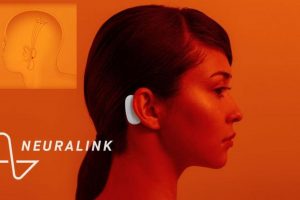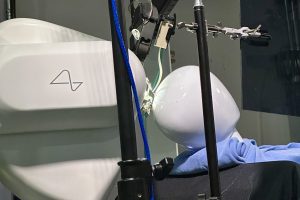Key Takeaways
- Neuralink’s PRIME brain implant study has now expanded to the University of Miami Health System’s Miami Project to Cure Paralysis, marking it as the second U.S. site.
- The study focuses on a brain-computer interface (BCI) intended to aid people with quadriplegia from ALS or spinal cord injuries, enabling device control through thought.
- A similar study, the CAN-PRIME, was launched in Canada at the Toronto Western Hospital, showcasing Neuralink’s expanding global research efforts.
- As of 2023, Neuralink secured FDA approval for its implants, with the first human recipient benefiting early this year; subsequent approvals have led to more implants.
- Elon Musk has ambitious plans to expand the implants to up to 1,000 humans in the near future, emphasizing the scalability of the technology.
- Neuralink is developing a new device called “Blindsight” aimed at restoring vision to individuals with optic nerve damage or blindness.
In the realm of groundbreaking technology, Neuralink, founded by Elon Musk, continues to capture global attention with its pioneering efforts in brain-computer interfaces (BCI). As the company advances into new territories, both geographically and technologically, the implications for medical science and human capability are vast and profound. This blog post delves into the latest developments from Neuralink’s PRIME study and explores the potential of its visionary projects.
Expansion of the PRIME Study: A New Frontier in Miami
In a significant move, Neuralink has expanded its PRIME brain implant study to the University of Miami Health System’s Miami Project to Cure Paralysis. This marks the second U.S. site for this initiative, reflecting the project’s accelerating momentum and promise. The study, which focuses on harnessing BCI technology to assist individuals with quadriplegia due to conditions like ALS or spinal cord injuries, aims to provide these patients with the ability to control devices using only their thoughts. By embedding this technology in an environment renowned for medical research and rehabilitation, Neuralink is putting itself at the forefront of transformative health solutions.
Key Objectives of the PRIME Study:
- Safety and Effectiveness: Ensuring that the brain-computer interface is both safe for users and effective in translating brain signals into actionable commands.
- Patient Empowerment: Rehabilitating individuals with severe motor impairments by providing them with a newfound level of autonomy.
- Technological Refinement: Continuously advancing the capabilities of the BCI hardware and software to optimize user experience and functionality.
Crossing Borders: Global Ambitions with the CAN-PRIME Study
Neuralink isn’t limiting its advancements to the U.S. soil. With the launch of the CAN-PRIME study at the Toronto Western Hospital in Canada, the company is indicating broader global research efforts. This expansion highlights the universal potential of BCI technology and Neuralink’s determination to position itself as a leader on the world stage.
FDA Approval: Milestone Achievements and Future Prospects
After receiving FDA approval in 2023, Neuralink successfully performed its first human implant early this year. This crucial endorsement has not only validated the company’s rigorous research and development but also paved the way for subsequent procedures, aiming for scalability and wider accessibility.
The Road Ahead:
- Scaling Up: Elon Musk has articulated ambitious goals to increase the number of human implants to up to 1,000 by next year. This ambitious target underscores the vision of making this groundbreaking technology a common medical procedure.
- Continuous Innovation: Beyond the current capabilities, Neuralink is persistently involved in enhancing the potential applications of BCIs.
Introducing “Blindsight”: A Ray of Hope for the Visually Impaired
Not limited to mobility impediments, Neuralink is venturing into sensory restoration with the development of a new device called “Blindsight.” This innovative technology aims to restore vision for those with optic nerve damage or blindness, opening new vistas in sight restoration therapies.
A Promising Horizon
Neuralink’s efforts in expanding the PRIME study and developing new technologies such as “Blindsight” signify a tectonic shift in how we might perceive and interact with the world around us in the future. As research progresses and as legal and ethical considerations are met, the scope of neural interfaces could vastly change the landscape of medical treatment and human interaction with technology.





